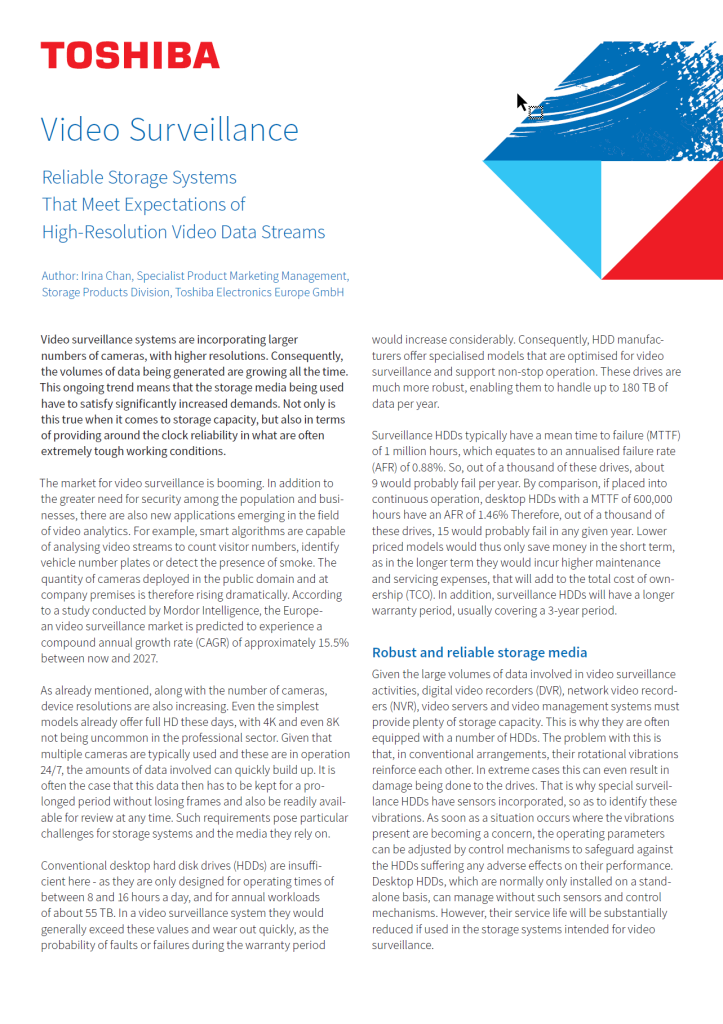Reliable Storage Systems That Meet Expectations of High-Resolution Video Data Streams
By Irina Chan, Toshiba Electronics Europe
Video surveillance systems are incorporating larger numbers of cameras, with higher resolutions. Consequently, the volumes of data being generated are growing all the time. This ongoing trend means that the storage media being used have to satisfy significantly increased demands. Not only is this true when it comes to storage capacity, but also in terms of providing around the clock reliability in what are often extremely tough working conditions.
The market for video surveillance is booming. In addition to the greater need for security among the population and businesses, there are also new applications emerging in the field of video analytics. For example, smart algorithms are capable of analysing video streams to count visitor numbers, identify vehicle number plates or detect the presence of smoke. The quantity of cameras deployed in the public domain and at company premises is therefore rising dramatically. According to a study conducted by Mordor Intelligence, the European video surveillance market is predicted to experience a compound annual growth rate (CAGR) of approximately 15.5% between now and 2027.
As already mentioned, along with the number of cameras, device resolutions are also increasing. Even the simplest models already offer full HD these days, with 4K and even 8K not being uncommon in the professional sector. Given that multiple cameras are typically used and these are in operation 24/7, the amounts of data involved can quickly build up. It is often the case that this data then has to be kept for a prolonged period without losing frames and also be readily available for review at any time. Such requirements pose particular challenges for storage systems and the media they rely on.
Download the whole article here.
Irina Chan, Senior Specialist Product Marketing Management, Storage Products Division, Toshiba Electronics Europe GmbH


